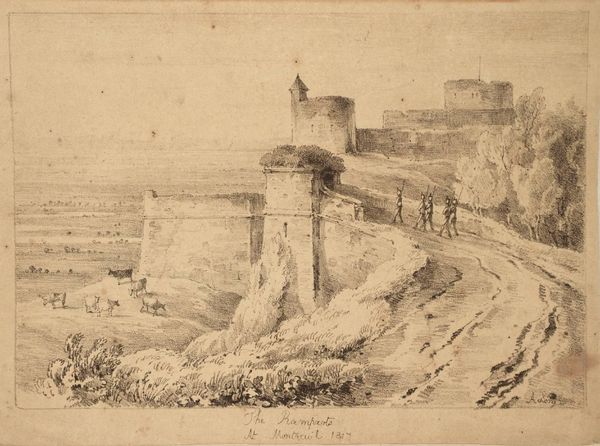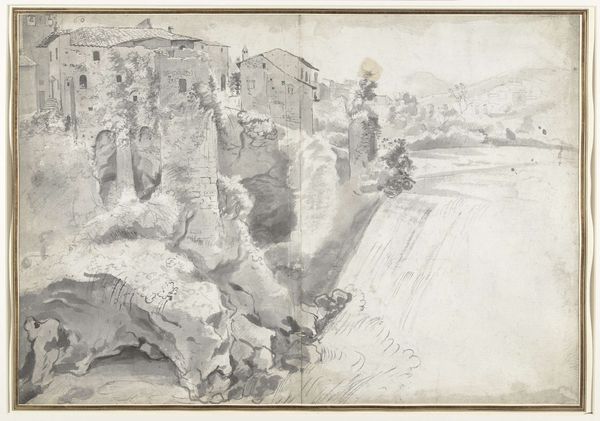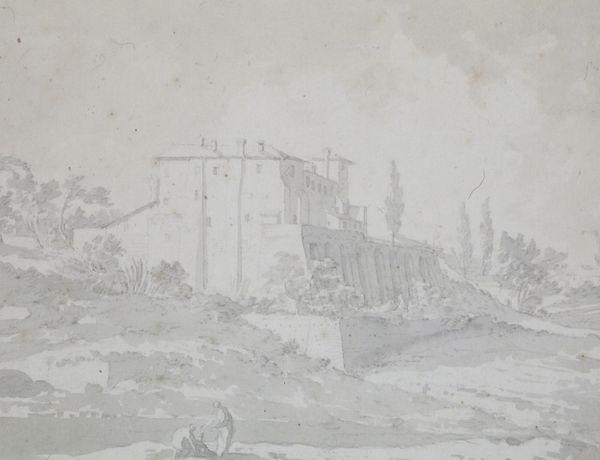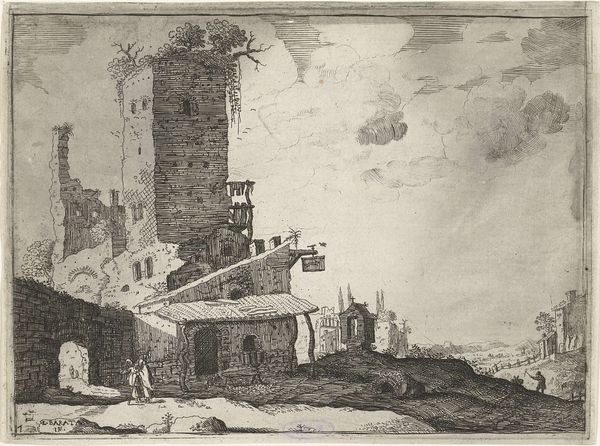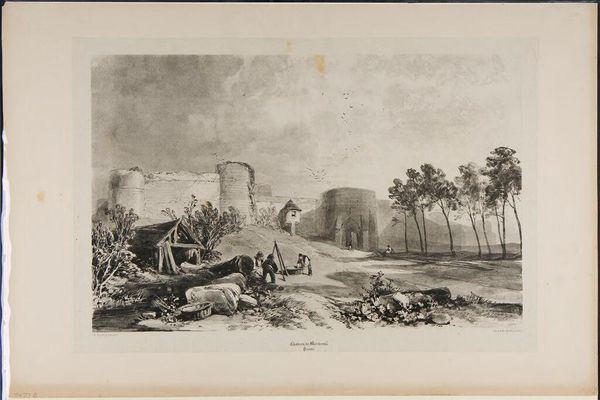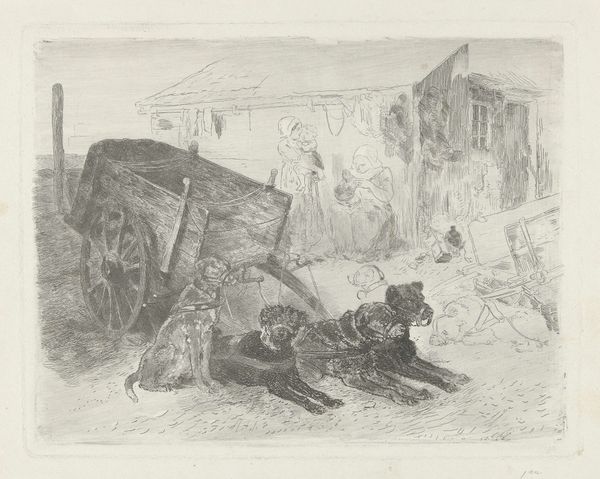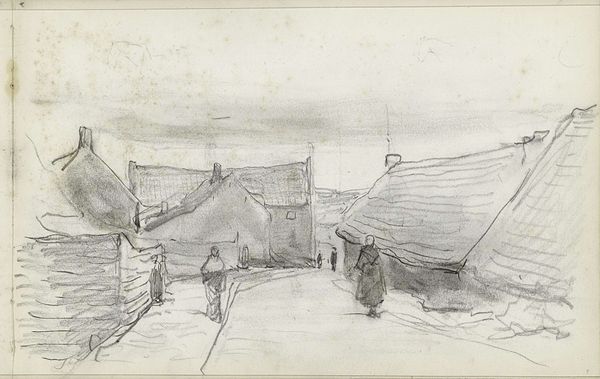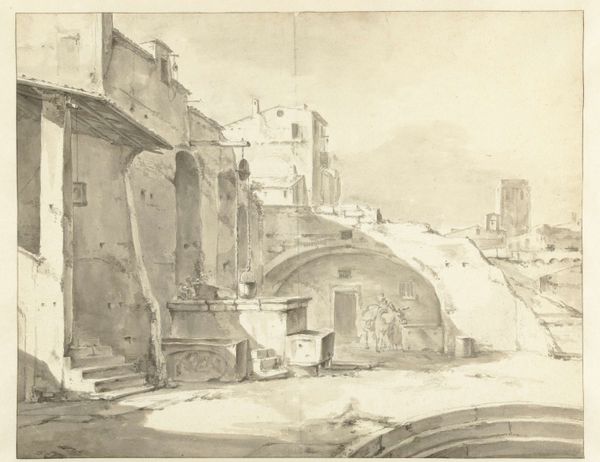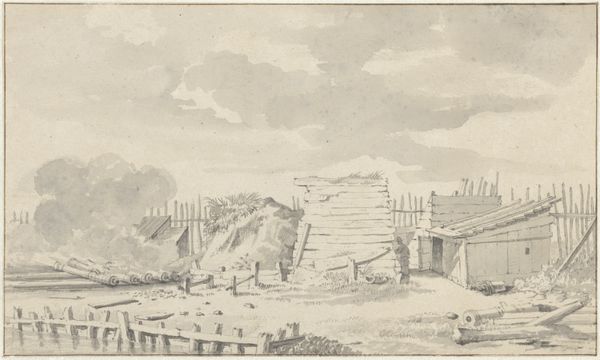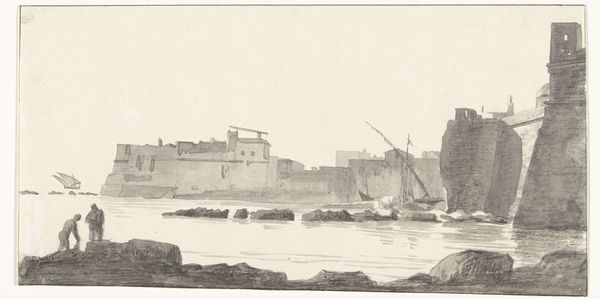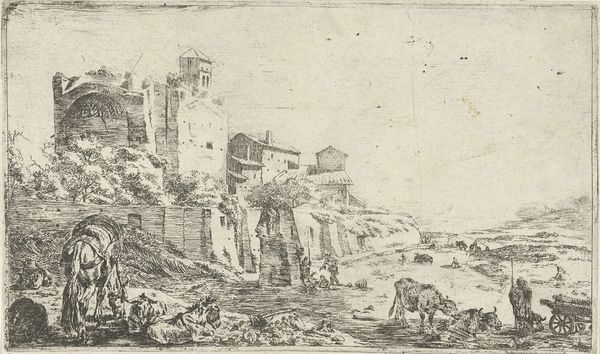
drawing, paper, ink, pencil
#
drawing
#
baroque
#
dutch-golden-age
#
landscape
#
figuration
#
paper
#
ink
#
pencil
#
cityscape
#
realism
Dimensions: height 270 mm, width 373 mm
Copyright: Rijks Museum: Open Domain
Jan Asselijn made this drawing of the Ponte Rotto in Rome using pen and brown ink with grey wash. Asselijn was one of many 17th-century northern European artists drawn to Rome, a city that had become synonymous with the classical past. But instead of grand monuments, he shows the ruins of a broken bridge in a medium typically used for finished works of art. Dutch artists working in Italy often depicted ruins to evoke a sense of melancholy, reflecting on the transience of human achievement. This aesthetic chimed with broader intellectual currents in Europe that emphasized empirical observation. It also reflects the changing status of the artist, who no longer needed to be tied to institutions like the church or the court. Through careful study of drawings like this one, we can understand the complex intersection of cultural, economic, and artistic forces that shape both the production and interpretation of art.
Comments
No comments
Be the first to comment and join the conversation on the ultimate creative platform.
